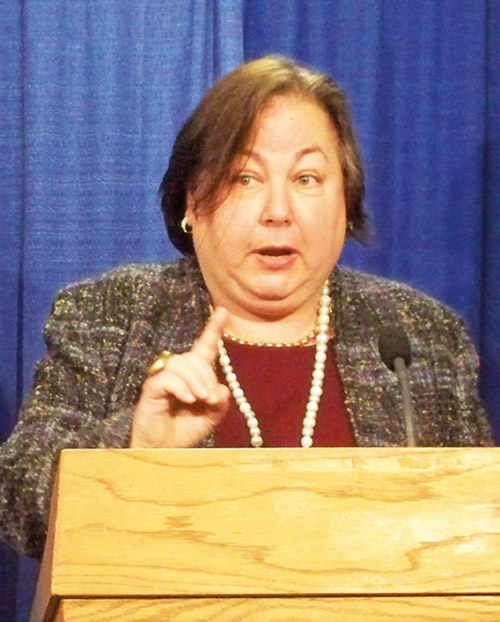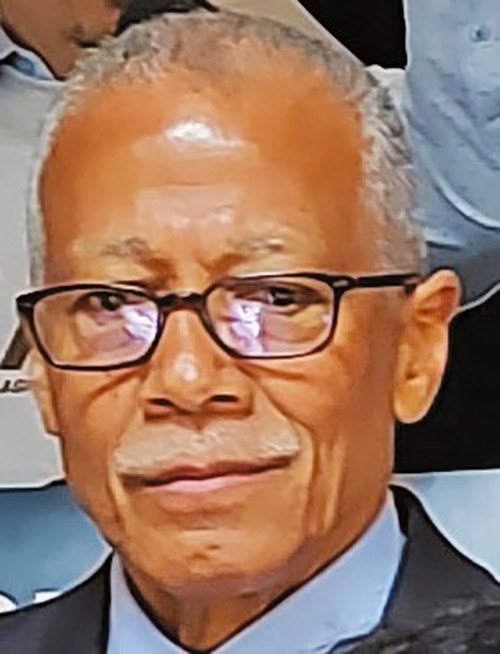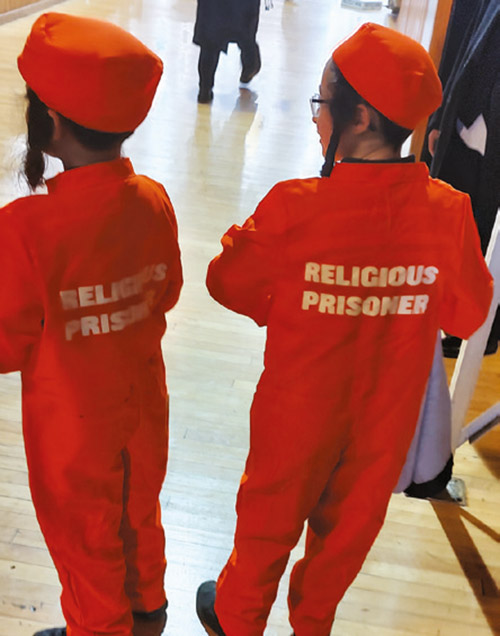
State lawmakers made a valiant attempt to try to make sense of the largest budget in state history proposed by Governor Kathy Hochul last month. Lawmakers slated 13 budget hearings over the course of 11 days in February to attempt to tackle the enormous spending plan. Listening to commissioners, local government leaders and advocates in varying fields whine, carp and complain about being inadequately funded in this budget took a total of four days, including questioning by state lawmakers and testimony from the aggrieved parties.
Many interest groups did not get a chance to speak at the hearings due to time constraints and instead opted to submit written testimony that will allegedly be read by staff of the appropriate committee. The longest one-day hearing lasted more than 13 hours on the subject of environmental conservation. As daunting as all this seems, advocates balked at the omission of veterans’ affairs due to its upgraded status as a cabinet-level agency last year, bringing the cabinet posts up to 14 agencies. There are a total of 96 agencies that make up the government of New York State.
The $227 billion spending plan outlined a month ago by the governor is likely to increase as lawmakers and advocates both agreed there were certain tweaks that needed to be made in order for certain programs to operate properly. One budget submission sent in writing from UJA-Federation of New York seeks the legislature to add money for funding pre-K programs.

“UJA supports the $125 million investment included in the FY24 (Fiscal Year 2024) Executive Budget but encourages a total of $250 million be included in the enacted budget to accelerate Pre-K expansion, ensure providers are being compensated at the true cost of overseeing the program and make this program universally accessible throughout the state,” wrote Faith Behum, the senior advocacy and policy advisor for the UJA Federation, in her submitted testimony. “One agency in Long Island pays lead teachers in their Pre-K program between $33,000 and $35,000 a year while an individual with similar credentials gets paid upward of $65,000 in New York City. It is becoming increasingly financially challenging for these programs to remain open.”
UJA is also asking state lawmakers to increase funding for STEM [science, technology, engineering and math] education in nonpublic school programs even though in the governor’s proposed budget there is an increase in aid from $58 million to $70 million.
“UJA asks that funding for the STEM reimbursement program increase this year. The importance of the STEM reimbursement program is evidenced by how many nonpublic schools have applied. By August 1, 2018, the state had received 1,800 applications totaling $81 million, far beyond the current appropriation. UJA urges increased support for the program toward $90 million to meet current demand, and expand, beyond STEM, the secular subjects for which reimbursement is eligible,” wrote Behum.
Many Jewish organizations, including Agudath Israel of America, TEACH NYS and the UJA, urged lawmakers to restore funding in the free school breakfast and lunch program.

“At the start of this school year, more than 726,000 students in nearly 2,000 schools across the state lost access to free school meals. New York State must establish and fund a permanent, statewide Healthy School Meals for All program to ensure all students have the healthy food they need to learn and thrive,” Behum wrote in her submitted testimony.
The Adult Literacy Education [ALE] program was cut under the governor’s budget, and UJA is seeking support from state lawmakers to make that program whole again.
“Restoration of the $1.5 million, combined with an investment of $18.6 million, in the ALE Stabilization and Enhancement Fund and seats for additional students would allow providers to better serve the more than 5,600 New Yorkers enrolled in state-funded ALE programs and UJA requests the legislature’s support. UJA urges the Governor to restore funding to FY23 levels at $9.3 million so that programs can remain whole. UJA also respectfully requests support for the investment of an additional $9.3 million in ALE programs for a newly proposed ALE Stabilization and Enhancement Fund to begin to stabilize and enhance ALE programs.”
The group YAFFED (Young Advocates for Fair Education) told lawmakers that yeshivas should be required to provide an attestation verifying they are in compliance with proposed state education requirements regarding providing substantially equivalent education in their school in the topics of English, mathematics, social studies and science.
“We’re very pleased that there is a new regulatory process underway,” Phylisa Wisdom, director of governmental affairs and development at YAFFED, told lawmakers at the budget hearing. “The Regents voted unanimously in September on these new regulations governing nonpublic schools. That regulatory process will take two years to unfold. We know there are tens of thousands of students in these yeshivas right now and not all of them are guilty of not providing a secular education. In the meantime, we are suggesting that an attestation be put into place that any nonpublic schools receiving state aid simply check the box to say they declare that they are offering a substantially equivalent education.”

Senator Shelley Mayer (D – Yonkers, Westchester County) wanted to know more. “The question is for your proposal for an attestation. Would this be an annual document that every nonpublic school would send into the state Education Department?”
“Ideally there wouldn’t need to be an annual ongoing attestation if the new regulations and the current law are being followed,” Wisdom said. “The new regulatory process does require schools to give lots of information in various formats. This may become moot at that point but our concern is primarily for the students who are in these schools over the next two years before that process really takes off.”
Senator Robert Jackson (D – Washington Heights, Manhattan), a Muslim lawmaker with African-American and Chinese descent supported YAFFED’s proposal to mandate an attestation.
“YAFFED,” Jackson said to Wisdom, “you know where I stand with that. I’ve said loud and clear, if they’re not doing it, cut ’em off. Cut the money off. Enough is enough. I have heard. I have seen people send up from the yeshiva community that says they will go to jail first if someone tells them what to teach in schools. I’m not saying you can’t teach your religious texts but in fact if you’re getting state money to do regulatory stuff it has to be done. That’s what I’m saying overall. If you’re receiving state money you have to do what is supposed to be done. If not, I’ve said loud and clear, if you’re not going to comply, cut them off. That’s my position.”
In response to questioning from Senators Jackson and Liz Krueger (D – Upper East Side), Rabbi Yeruchim Silber, director of New York government relations for Agudath Israel of America, defended the group’s complaint that the New York Times wrote more than a dozen articles that told half-truths and insinuations, even though this was not a budget item.
“The state Education Department report and a New York Times investigation report found that tens of thousands of students attending chasidic yeshivas receive little or no secular education,” Jackson noted. “There is a regulatory process underway rolling out over the next two years. How are schools that do not provide substantially equivalent education working right now to get into compliance with the state law and the newly passed state regulations?”
“Senator, I’m glad you brought that up. The New York Times wrote 13 articles and apparently has an obsession with the Orthodox community,” Silber countered. “A lot of the claims are based on faulty data, cherry-picked data, innuendo and interviews that were not done, interviews that were done with certain people.
“Schools have many ways of educating children. Some have very superior secular [curricula]. Some schools are more culturally sensitive. Agudah does not control any schools. We advocate for them. We don’t control any schools,” Silber concluded.
Other increases requested by the Jewish community in the budget include increasing a Non-Public School Safety Equipment Grant from $45 million to $100 million; a 3% increase for nonpublic academic intervention services, which would bring the aid to close to $950,000, up from the proposed $922,000; and $5 million to create a new arts and music reimbursement program.
“Our schools generate $537 million in state and local revenues through such sources as employment taxes, social security taxes, excise taxes and sales taxes,” Sydney Altfield, executive director of Teach NYS, a project of the Orthodox Union, conveyed in her written testimony. “Investing in nonpublic schools brings significant return on investment to the state. We want to ensure that our children receive a well-rounded and quality education that develops their skills and prepares them for the future. Let’s not leave the nonpublic school community behind.”
During the local government budget hearing, known as Tin Cup Day, Assemblyman Charles Fall (D – Mariners Harbor, Staten Island) questioned New York City Mayor Eric Adams, a former state Senator and a former New York City police officer, about the decline in officers at two precincts on Staten Island as well as flood mitigation process and a rise in homelessness in what was once known as the forgotten borough.
“We’re noticing a decrease in the head count of the police officers at the 121 and 120 precincts. We would like to have some help and support there because the more resources they have the better it is,” Fall said. “Regarding homelessness, we have similar issues on the Staten Island side and the Manhattan side [of my district]. We would love for your team to be on top of that. What are some of your short-term and long- term plans for directing some of these infrastructure issues on the Island when it comes to flood mitigation?”
With only three minutes to comment on these lengthy issues, Adams said he would send his team to meet with Fall’s team to provide a full analysis.
“Under this administration Staten Island is not the forgotten borough,” Adams pledged. “There is a real plan for shoring up our shore lines. We will have our team come in, sit down and give you the full analysis of some of the projects that we are going to put in place on Staten Island.”
Another Staten Island lawmaker, a former prosecutor in the Bronx, wanted Adams to give his take on judicial discretion.
“Assuming we have the right people on the bench, do you feel that we need increased judicial discretion because no two cases are alike, no two defendants are alike, no two victims are alike and an increase in judicial discretion would prevent a lot of these recidivists from continuously committing crimes and not showing up to court,” Assemblyman Michael Tannousis (R – Great Kills, Staten Island) asked Adams.
In his response, Adams played it both ways.
“I’ve always said that we should have some type of judicial discretion,” Adams said. “I’m also clear that we need to look at the totality of the criminal justice system. Underfunding defense attorneys, shortage in district attorneys, the amount of cases going through the court system. While I’m a supporter of giving a judge more discretion I’m also a supporter of addressing the totality of the criminal justice system and the problems we’re facing.”
“Charter schools, if they were to grow, would cost you a real $1.3 billion a year,” Tannousis said. “I understand your point, though, that you have to educate children somewhere but apparently the proposal by the governor really would dig into your school budget and as you have already pointed out because of the law that we passed on class size, you do have continued responsibilities for some growth in the cost of education. We should all try to be on the same page of why this is an extremely expensive proposal for the City of New York. I don’t think this (lifting the charter school cap) is in the best interest of the city.”
With only a month left before the April 1st deadline, budget analysts from each party in each house of the legislature will provide their take on how the numbers add up. That analysis is expected within two weeks. Then both houses come to a consensus and the budget votes begin, usually the last week in March.
By Marc Gronich









